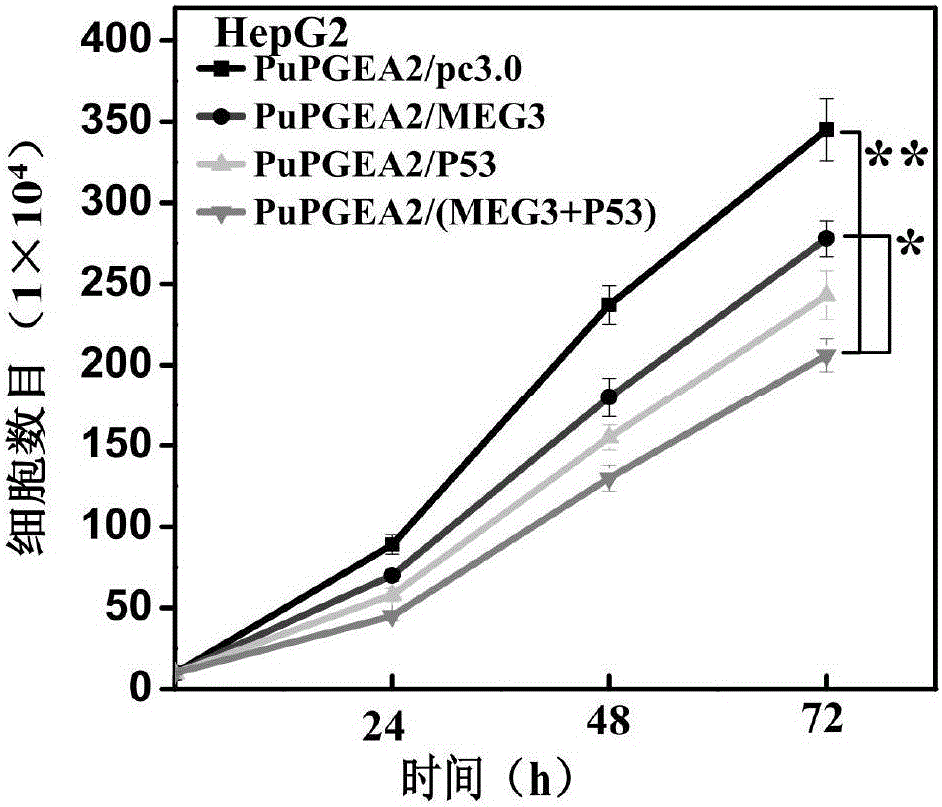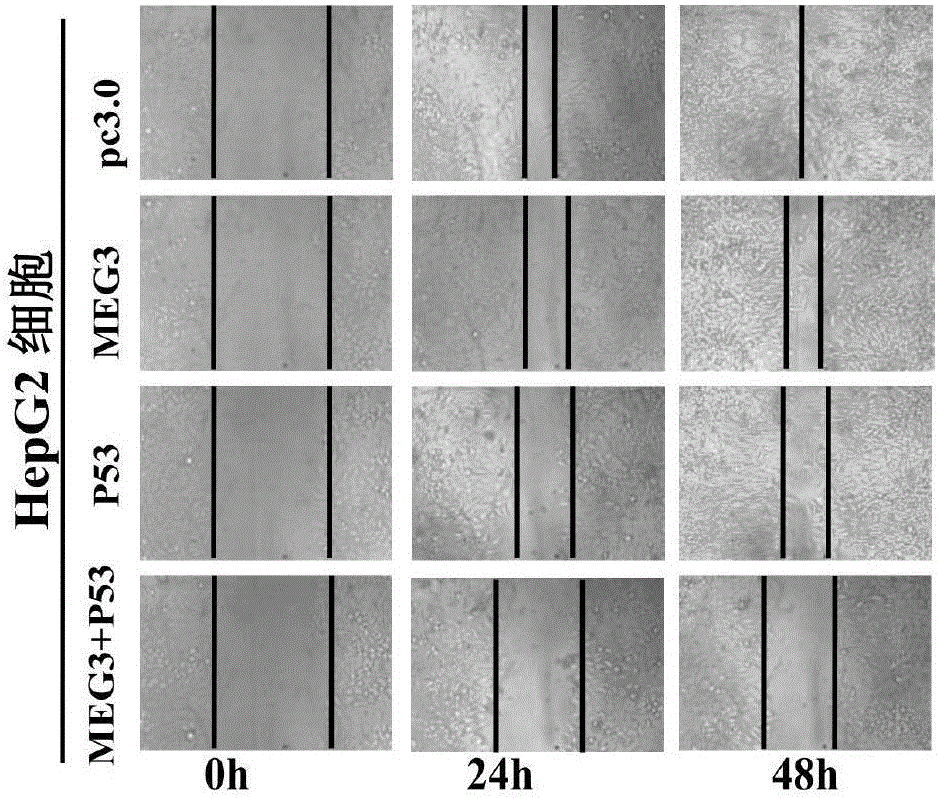Liver targeting cationic polymer as well as preparation method and application thereof
A cationic polymer, ionic polymer technology, applied in the field of biomedicine, to achieve the effects of inhibiting proliferation, high anticancer activity, and enhancing stability
- Summary
- Abstract
- Description
- Claims
- Application Information
AI Technical Summary
Problems solved by technology
Method used
Image
Examples
Embodiment 1
[0043] Example 1 Preparation of Liver Targeting Cationic Polymer PuPGEA and Liver Targeting Nanocomposite
[0044] A method for preparing a liver-targeted cationic polymer, the steps are as follows:
[0045] (1) After completely dissolving pullulan (Pullulan, 3g) and 4-dimethylaminopyridine (DMAP, 0.15g) in anhydrous dimethylformamide (DMF, 30mL), in an ice bath and stirring A solution of 2-bromoisobutyryl bromide (BIBB, 0.148 mL) in DMF (0.6 mL) was added under conditions. Then the system was transferred to normal temperature to react for 24 hours, and then bromoisobutyl functionalized pullulan (PuBr) as a polymerization initiator was obtained by dialysis and freeze-drying.
[0046] (2) Put 80 mg of PuBr into anhydrous dimethyl sulfoxide (DMSO, 2 mL), glycidyl methacrylate (GMA, 0.8 mL), cuprous bromide (CuBr) and 2,2'- Bipyridine (Bipy) was added to the above DMSO at a molar ratio of 100:1:3, nitrogen gas was introduced into the mixture by bubbling for 20 minutes, sealed, ...
Embodiment 2
[0058] Example 2 Preparation of liver-targeting cationic polymer PuPGEA and liver-targeting nanocomposite
[0059] A method for preparing a liver-targeted cationic polymer, the steps are as follows:
[0060] (1) After completely dissolving pullulan (Pullulan, 2g) and 4-dimethylaminopyridine (DMAP, 0.438g) in anhydrous dimethylformamide (DMF, 20mL), the A solution of 2-bromoisobutyryl bromide (BIBB, 0.19 mL) in DMF (1.0 mL) was added under conditions. Then the system was transferred to normal temperature to react for 24 hours, and then bromoisobutyl functionalized pullulan (PuBr) as a polymerization initiator was obtained by dialysis and freeze-drying.
[0061] (2) Put 30 mg of PuBr into anhydrous dimethyl sulfoxide (DMSO, 1 mL), glycidyl methacrylate (GMA, 0.5 mL), cuprous bromide (CuBr) and 2,2'- Bipyridine (Bipy) was added to the above-mentioned DMSO at a molar ratio of 80:1:3, and nitrogen gas was passed through by bubbling for 20 minutes, then sealed, and then reacted at...
Embodiment 3
[0066] Example 3 Preparation of Liver Targeting Cationic Polymer PuPGEA and Liver Targeting Nanocomposite
[0067] A method for preparing a liver-targeted cationic polymer, the steps are as follows:
[0068] (1) After completely dissolving Pullulan (Pullulan, 4g) and 4-dimethylaminopyridine (DMAP, 576mg) in anhydrous dimethylformamide (DMF, 40mL), in ice bath and stirring conditions A solution of 2-bromoisobutyryl bromide (BIBB, 0.54 mL) in DMF (5 mL) was added. Then the system was transferred to normal temperature to react for 24 hours, and then bromoisobutyl functionalized pullulan (PuBr) as a polymerization initiator was obtained by dialysis and freeze-drying.
[0069] (2) Put 0.1 g of PuBr into anhydrous dimethyl sulfoxide (DMSO, 3 mL), glycidyl methacrylate (GMA, 0.9 mL), cuprous bromide (CuBr) and 2,2' -Bipyridine (Bipy) was added to the above-mentioned DMSO at a molar ratio of 120:1:3, and nitrogen gas was passed through by bubbling for 20 minutes, then sealed, and th...
PUM
 Login to View More
Login to View More Abstract
Description
Claims
Application Information
 Login to View More
Login to View More - Generate Ideas
- Intellectual Property
- Life Sciences
- Materials
- Tech Scout
- Unparalleled Data Quality
- Higher Quality Content
- 60% Fewer Hallucinations
Browse by: Latest US Patents, China's latest patents, Technical Efficacy Thesaurus, Application Domain, Technology Topic, Popular Technical Reports.
© 2025 PatSnap. All rights reserved.Legal|Privacy policy|Modern Slavery Act Transparency Statement|Sitemap|About US| Contact US: help@patsnap.com



